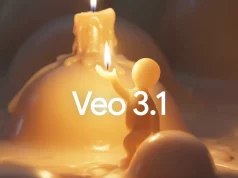Ever wondered why Google Translate chooses a particular translation? A new experimental AI feature is finally pulling back the curtain to show how the app thinks.
Since its launch in 2006, Google Translate has been an essential companion for travelers, students, and multilingual professionals. The service now translates more than a trillion words each month, according to Google. Of course, that doesn’t mean it always gets things right. Over the years, it has inspired countless memes, listicles, and YouTube compilations of amusing translation blunders.
Until now, though, Google Translate has never been able to explain how it arrived at a translation. That’s changing with an experimental “Understand” button now being tested in the Android version of the app, as reported by Android Authority.
How the “Understand” Feature Works
When users tap “Understand,” the app uses Gemini AI to describe the reasoning behind its translation choices — essentially showing its linguistic “thought process.” It can even critique the phrasing of your original text.
A New “Ask” Option for Learners
Alongside “Understand,” another AI-driven button titled “Ask” offers learners the option to go deeper. It can generate related questions, use the translated phrase in context, and indicate whether the expression is formal or informal. This contextual insight goes beyond literal translation — the kind of nuance language teachers emphasize as key to true fluency.
Together, these two buttons replace the existing “Ask a follow-up” feature available on Android. The iOS version has yet to include any of these updates, though Apple users did get an early rollout of larger, clearer text that only recently arrived on Android.
Google’s Bigger Push Into Language Learning
This newfound emphasis on understanding fits neatly into Google’s larger educational goals for Translate. Earlier this year, the company announced Duolingo-like “language practice sessions,” starting in beta for English speakers learning Spanish.
“We’re going far beyond simple language-to-language translation,” wrote Google Translate product manager Matt Sheets. Based on user feedback, Sheets said the app aims to help users “listen and speak with confidence on the topics you care about.”
If Google can successfully integrate contextual learning and AI explanations, Translate may evolve from a convenience tool into a more robust language-learning companion. Whether that’s enough to challenge Duolingo’s full-fledged teaching system remains, for now, in the untranslatable future.










